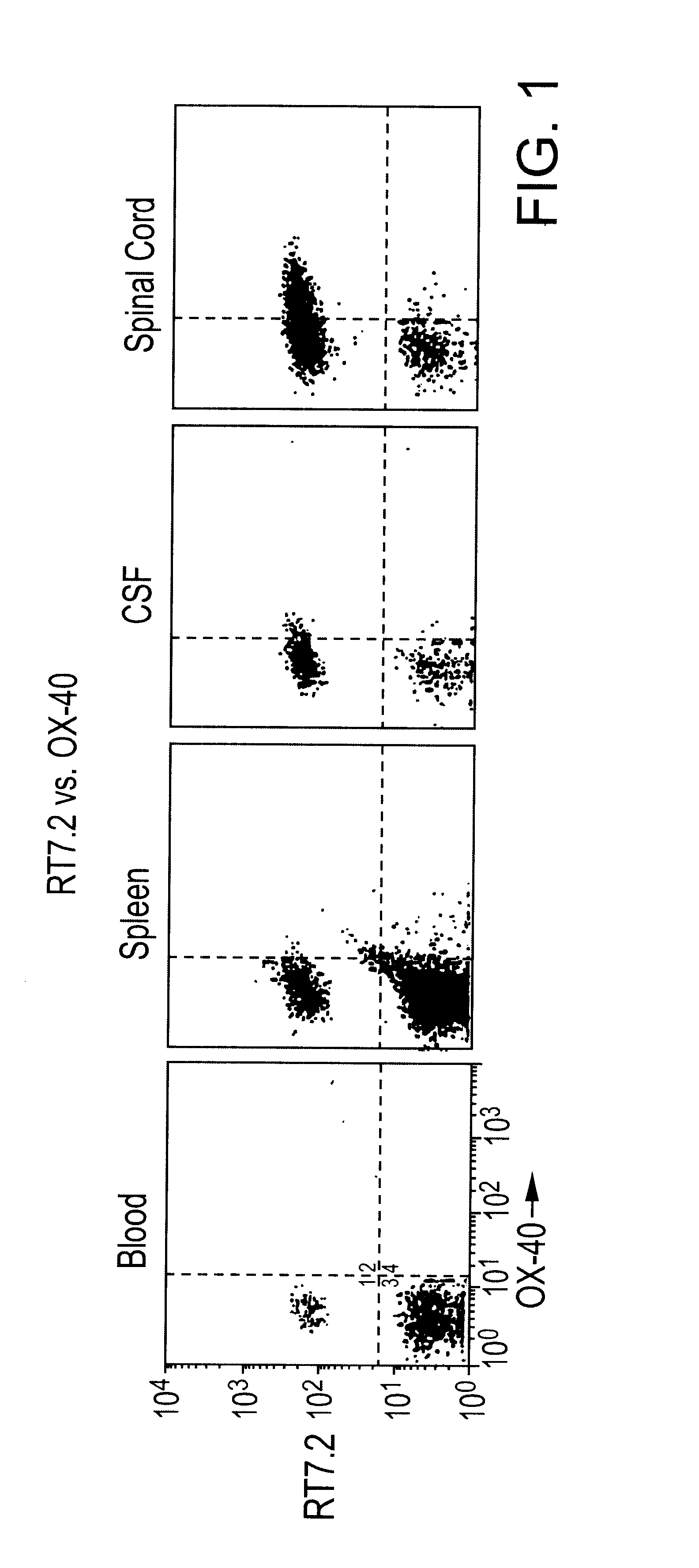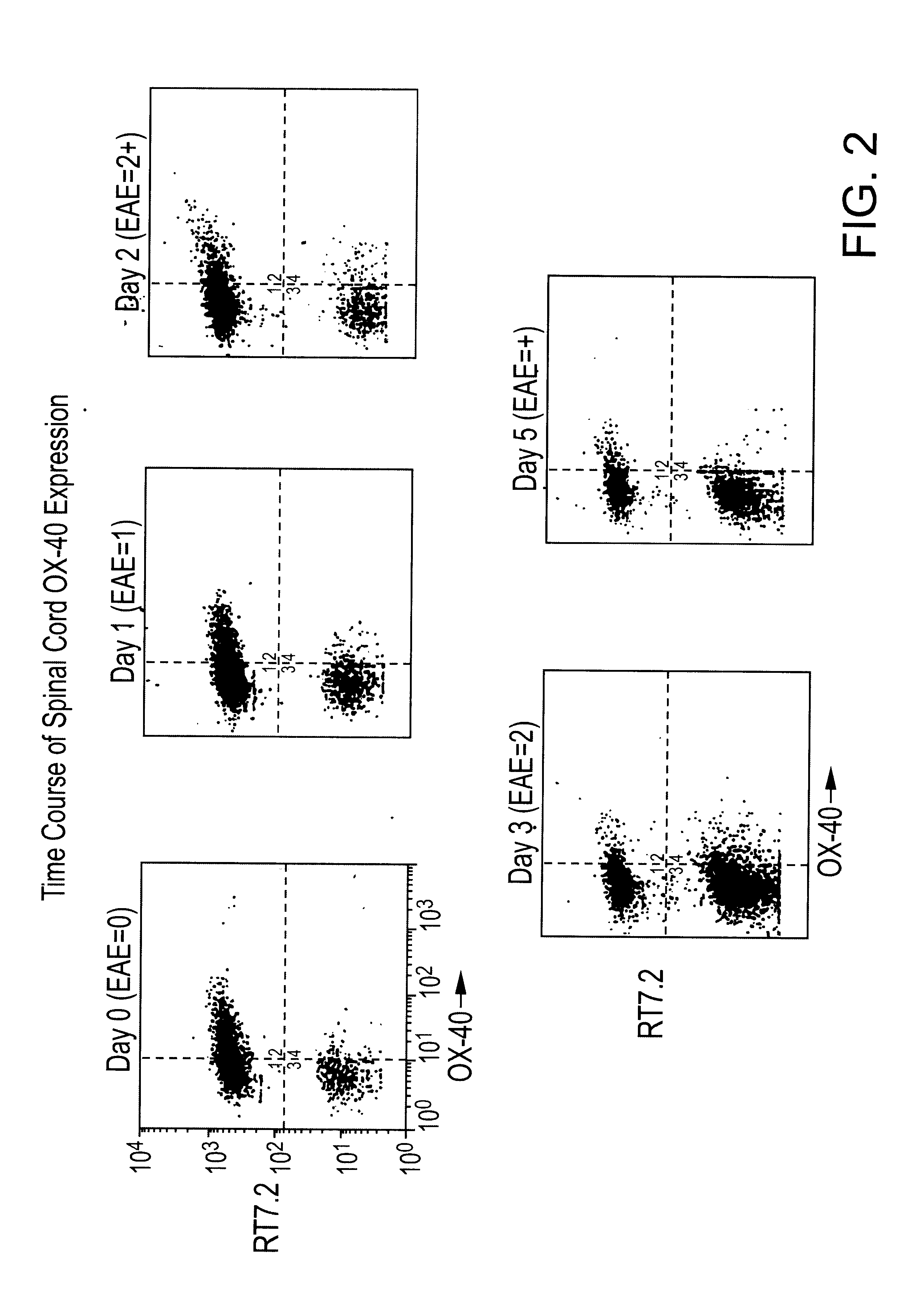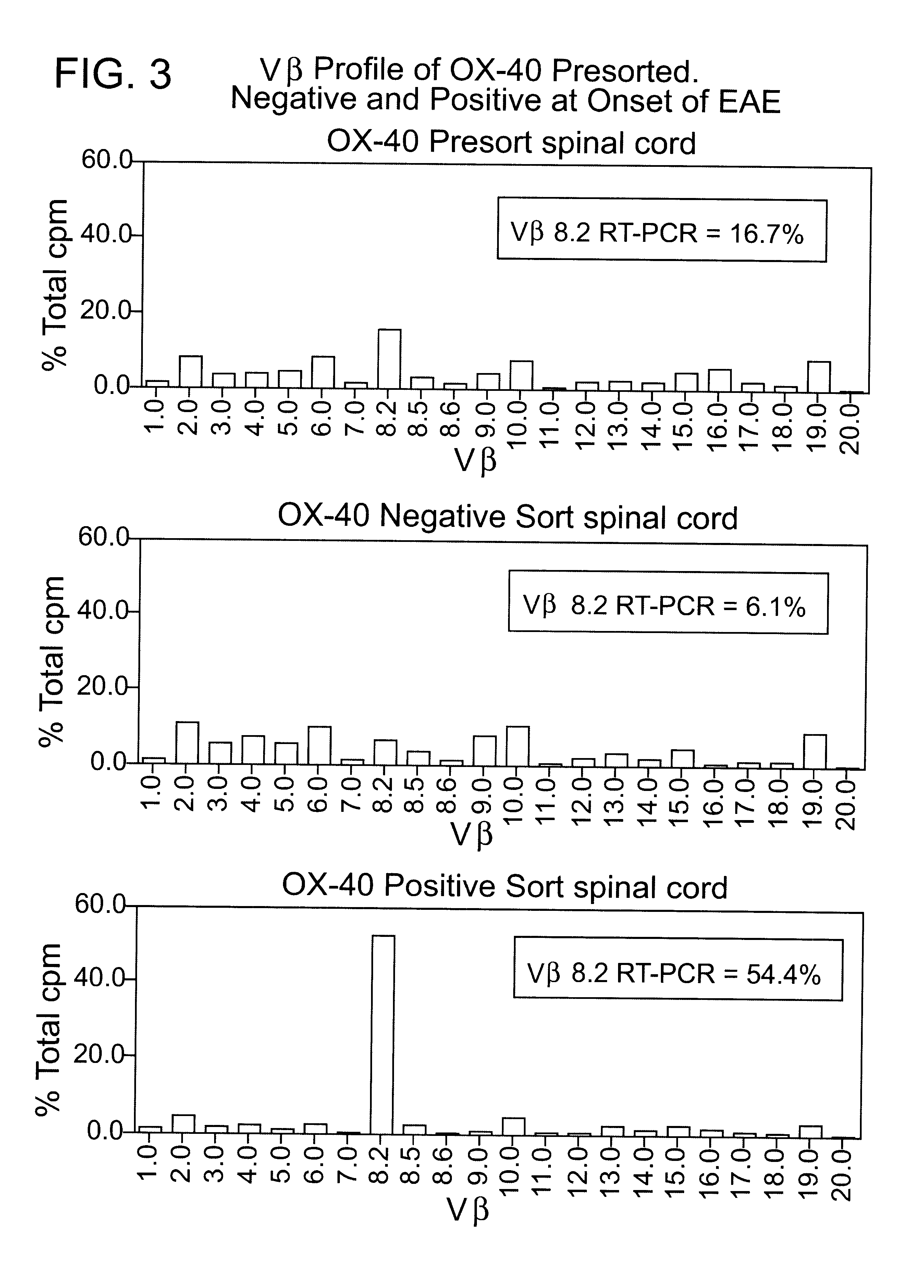T-cell antigens, and their use in diagnosis and treatment of T-cell mediated conditions
a technology of t-cells and antigens, which is applied in the direction of fusion polypeptides, peptide/protein ingredients, depsipeptides, etc., can solve the problems of serious problems, illness and even death, and the approach of these cells can have a very major drawback
- Summary
- Abstract
- Description
- Claims
- Application Information
AI Technical Summary
Benefits of technology
Problems solved by technology
Method used
Image
Examples
example one
Having herein provided the sequence of the human OXT-40 cDNA, one skilled in the art will recognize that the full length cDNA clone can now readily be obtained by standard methods. Such methods include, for example, the polymerase chain reaction (PCR) by which means DNA sequences can be amplified. Methods and conditions for PCR amplification of DNA are described in Innis et al. (1990) and Sambrook et al. (1989).
The selection of PCR primers for amplification of the human OX-40 cDNA will be made according to the portions of the cDNA which are desired to be amplified. Primers may be chosen to amplify small fragments of the cDNA or the entire cDNA molecule. Variations in amplification conditions may be required to accommodate primers of differing lengths; such considerations are well known in the art and are discussed in Innis et al. (1990). By way of example only, the entire cDNA molecule corresponding to the human OX-40 cDNA may be amplified using the following primers. Primers 1 and ...
example two
With the provision of the human OX-40 cDNA, the expression and purification of the human OX-40, protein by standard laboratory techniques is now enabled. The purified protein may be used for antibody production and patient therapy.
Partial or full-length cDNA sequences, which encode for the subject protein, may be ligated into bacterial expression vectors. Methods for expressing large amounts of protein from a cloned gene introduced into Escherichia coli (E. coli) may be utilized for the purification of the human OX-40 protein. For example, fusion proteins consisting of amino terminal peptides encoded by a portion of the E. coli lacZ or trpE gene linked to the part or all of the human OX-40 protein may be used to prepare polyclonal and monoclonal antibodies that recognize the human OX-40 protein. Intact, native proteins may also be produced in E. coli in large amounts for functional studies. Methods and plasmid vectors for producing fusion proteins and intact native proteins in bacte...
example three
Monoclonal antibodies may be produced to the human OX-40 protein for therapeutic use. Substantially pure human OX-40 protein suitable for use as an immunogen is isolated from the transfected or transformed cells as described in Example 2 above. Concentration of protein in the final preparation is adjusted, for example, by concentration on an Amicon filter device, to the level of a few milligrams per milliliter. Monoclonal antibody to the protein can then be prepared as follows:
A. Monoclonal Antibody Production by Hybridoma Fusion.
Monoclonal antibody to epitopes of the human OX-40 protein identified and isolated as described can be prepared from murine hybridomas according to the classical method of Kohler and Milstein (1975) or derivative methods thereof. Briefly, a mouse is repetitively inoculated with a few micrograms of the selected purified protein over a period of a few weeks. The mouse is then sacrificed, and the antibody-producing cells of the spleen isolated. The spleen cell...
PUM
| Property | Measurement | Unit |
|---|---|---|
| volume | aaaaa | aaaaa |
| fluorescent | aaaaa | aaaaa |
| hydrophobic | aaaaa | aaaaa |
Abstract
Description
Claims
Application Information
 Login to View More
Login to View More - R&D
- Intellectual Property
- Life Sciences
- Materials
- Tech Scout
- Unparalleled Data Quality
- Higher Quality Content
- 60% Fewer Hallucinations
Browse by: Latest US Patents, China's latest patents, Technical Efficacy Thesaurus, Application Domain, Technology Topic, Popular Technical Reports.
© 2025 PatSnap. All rights reserved.Legal|Privacy policy|Modern Slavery Act Transparency Statement|Sitemap|About US| Contact US: help@patsnap.com



